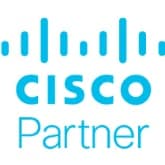July 07, 2023
Optimize Your Connection to the Hybrid Cloud
With more options for connectivity, organizations face challenges as they move more data and systems to the cloud.
IN THIS ARTICLE
Simplify Your Cloud Connection
Connectivity Challenges and Objectives
Great Connections to the Cloud
The Evolution of the Cloud
For many organizations, regardless of size or industry, the cloud has become an essential resource for critical operations. As cloud technology has evolved, as-a-service offerings have expanded far beyond software to encompass infrastructure, platform, cybersecurity, backup, disaster recovery and more. Now, many organizations recognize that while a cloud-first approach yields many benefits, it also can introduce complexities that IT teams must resolve to optimize their cloud strategies fully.
One of the most significant areas that organizations are revisiting is connectivity. In the early years of the cloud, most organizations connected to the cloud however they could. But more options exist today, and it’s critical to choose the right one. In addition, many organizations moved to the cloud without much advance planning; for instance, not considering how applications would operate within the cloud or whether specific applications could move to the cloud.
Now, IT leaders are asking questions such as: Are we connecting to multicloud or hybrid cloud environments in cost-effective ways? Are connections increasing or detracting from business agility, operational efficiencies and resiliency? Are cloud connections secure and compliant? Do we deliver consistent performance to users?
To address these issues, proactive organizations are adopting cloud-smart strategies. They aim to use the cloud more efficiently and extract maximum value by reducing costs, optimizing operations and avoiding vendor lock-in. Evaluating connectivity options and strategies is an excellent way to achieve these goals and reduce some of the complexity that may have accumulated over time.
Organizations that don’t optimize their connections to the cloud often face increased latency that hampers application performance, increases downtime and makes management and monitoring more burdensome. Maintaining compliance, creating a unified security effort and integrating operations can also be more challenging. These concerns take on added weight in multicloud environments, which are already complex.
Overcoming these challenges requires an intentional approach to connectivity, one that unifies the cloud experience across on-premises and off-premises infrastructure and establishes centralized management. In the process, this cloud-smart approach facilitates agility, resiliency and performance.
From Complexity to Clarity
While implementing the proper cloud connectivity may seem overwhelming, the benefits — including simplified management, monitoring and performance — are worth the effort.
IT teams often lack a deep bench of cloud expertise, which makes cloud optimization more challenging. The right approach to connectivity can simplify operations and ease management for small staffs.
The wide range of options makes it challenging to craft the best strategy and pivot as business needs change. Ensuring that connectivity is both secure and high-performing is a common challenge.
Ultimately, IT teams require end-to-end visibility, monitoring and automation to drive cloud optimization efforts. Connectivity plays a significant role in an organization’s ability to achieve these outcomes.
When many organizations began their cloud journeys, VPN was typically the default for connectivity, but options have since expanded. Software-defined wide area networking (SD-WAN) is one of the most powerful, as it enables connections that are on-demand, scalable and designed for optimization. Selecting the right solution for each environment is essential.
INCREASE CLOUD VISIBILITY
SD-WAN is ideally suited to the cloud in several important ways, making it a natural extension of on-premises infrastructure. SD-WAN simplifies management, automates cloud operation and allows for easy user-to-application connections. It also increases networking visibility and monitoring and, from a security perspective, supports end-to-end segmentation and encryption.
REFINE WORKLOAD POLICIES
SD-WAN helps organizations adapt quickly to organizational changes in their hybrid cloud infrastructure. As workloads move, IT teams can quickly gain insight into what’s happening in the environment. This enables them to understand precisely what is moving and adopt short-term policies as needed. SD-WAN also supports flexible consumption and deployment options.
OPTIMIZE PERFORMANCE
Performance benefits of SD-WAN include the ability to measure latency and other types of telemetry. Organizations can also set performance-enhancing policies to ensure certain kinds of workloads use specific modes of transport. SD-WAN integrates well with new connectivity technologies, which is especially useful in multicloud environments.
STANDARDIZE CYBERSECURITY
Secure service edge integrates cloud-centric capabilities — such as zero trust network access, cloud secure web gateway, cloud access security broker and Firewall as a Service — that secure access to private applications, Software as a Service and websites. SSE enforces security policies across the organization, regardless of where applications and workloads originate.
UNDERSTAND ALL OPTIONS
While SD-WAN and SSE are the most prevalent connectivity scenarios, other options — such as VPN, Direct Connect, cloud exchange and colocation — can be integrated with SD-WAN and offer various advantages and disadvantages. Ultimately, an organization must choose the connectivity strategy that aligns with its size, application needs and business objectives.
VPNs AND DIRECT CONNECT
On-premises VPNs present a traditional approach to security configurations that can result in inefficient traffic flows. Cloud-based VPNs are similar in structure to traditional, on-premises VPNs and can be more costly to maintain. They also offer less flexibility for organizations that prioritize scalability. One VPN alternative is Amazon Web Services Direct Connect, which is more secure, more resilient and faster than an internet-based VPN connection.
CLOUD EXCHANGE AND COLO
Cloud exchanges are another private mode of connecting to the cloud. They integrate well with SD-WAN environments and make it easy to set parameters for security, performance and trafficking. For certain application and security requirements, the best strategy may be a colocation data center that also offers cloud connectivity services and Middle-mile optimization (MMO).
Cloud connectivity experts start where you are and help you build a roadmap to the destination you want to reach.
Making the Most of Cloud
88%
The percentage of organizations that view the cloud as the cornerstone of their digital strategy, vital to driving revenue and maintaining market position1
87%
The percentage of organizations that plan to increase their cloud investment by at least 6 percent over the next two years1
49%
The percentage of organizations whose top challenge in migrating workloads to public clouds is understanding application dependencies2
64%
The percentage of organizations whose top cloud initiative is optimizing costs for their current use of cloud2
45%
The percentage of organizations that use delivery speed of new products and services as the primary metric for assessing progress against cloud goals2
Sources: 1Deloitte, “US Future of Cloud Survey Report: Closing the Cloud Strategy, Technology, and Innovation Gap,” June 2022; 2Flexera, “2023 State of the Cloud Report,” March 2023
In addition to the inherent complexity of multicloud and hybrid cloud environments, organizations often face challenges when moving workloads to the cloud. Two of the most common areas of confusion involve controlling costs and leveraging connectivity effectively. In particular, organizations often need help determining which connectivity model best meets their needs, whether they are increasing automation or simplifying monitoring to accommodate a small IT team.
IT teams know they need to lead with modernization — helping their organizations increase speed and efficiency while lowering costs — but crafting a cloud connectivity strategy to do so can be overwhelming. It can also be challenging to align cloud connectivity with business needs and, similarly, to determine which spending model (capital expense versus operating expense) is the best fit for an organization. Meanwhile, cybersecurity is a crucial component of any design. Organizations must decide which data is essential for daily operations and how best to leverage public clouds versus on-premises instances.
The right solutions can help organizations migrate workloads seamlessly and manage them effectively.
Optimal connectivity facilitates faster, easier adoption of cloud applications, which results in a high-performing, cost-effective path between applications and users.
Build Business Resilience
Effective connectivity improves reliability and uptime across the entire IT stack, aligning cloud environments with IT objectives, such as unified policy distribution for security and compliance. By increasing visibility, teams also gain more control and flexibility, and can shorten the time needed to investigate and resolve security incidents.
Reap Benefits of Agility
A well-planned multicloud or hybrid cloud environment allows for effective integration of on-premises technology and public clouds. In addition to providing an essential foundation for scale and innovation, this also increases business agility by enabling teams to stand up new locations more quickly; reducing the time required to connect cloud applications and on-premises data centers; and smoothing integration of acquisitions.
Achieve High Performance
Cloud connectivity can significantly improve application performance and, thus, the experience for internal users and external customers. Effective connectivity also ensures that performance is not compromised, even in a complex security environment that spans headquarters, branch offices and remote workers. Speed, reliability and consistency should be the goal, regardless of where applications live.
Reduce Overall Costs
Streamlining and optimizing cloud connectivity lowers the total cost of ownership by increasing the efficiency and productivity of cloud operations. Ease of management and the opportunity to dynamically optimize traffic both contribute to cost savings. SD-WAN also helps by supporting cost-effective broadband and other types of connections..
Key Factors for Planning Cloud Connectivity
Organizations maturing their cloud strategy often ask: Why does it matter where applications exist? Whether an application is moved to the cloud, is rewritten for the cloud or resides on-premises, performance and user experience should be consistent. Application optimization is often a starting point for reassessing cloud connectivity, but IT teams should keep sight of other key considerations, such as automation, compliance and cybersecurity.
STRATEGY
Designing connectivity solutions for specific applications and standardizing across cloud instances is challenging but essential for a cloud-smart strategy. Organizations must determine where applications perform best and reside most efficiently.
AUTOMATION
Automated capabilities in cloud-native technologies deliver significant value. For example, automated configuration of cloud environments to adhere to cybersecurity standards and best practices is faster and less risky than manual configuration.
COMPLIANCE
Increasing reliance on the cloud requires close management to ensure organizations comply with data privacy and security regulations such as HIPAA, the General Data Protection Regulation and the California Consumer Privacy Act.
SECURITY
Early skepticism about cloud security has given way to confidence in the security of cloud environments. Proper connectivity helps to unify security policies and speed up the resolution of cybersecurity incidents.
A robust, efficient connection to the cloud is a foundational element of a successful multicloud or hybrid cloud environment. A third party often can help organizations get where they need to go in their cloud journey, providing experience and expertise to overcome common hurdles and align IT resources with business strategy.
CDW’s Cloud and Data Center Interconnect services help to ensure that cloud transitions align with and advance business strategy.
The Value of Orchestration
Organizations working to become cloud-smart may pursue multiple objectives, such as optimizing connectivity for additional workloads; reducing administrative tasks by integrating cloud connections with a new SD-WAN; building resiliency by offloading backups to a separate cloud; or enhancing performance for distributed employees. With so many options for connecting data centers to cloud providers, IT departments often seek help identifying the best approach and designing, implementing and operationalizing specific solutions.
Comprehensive Services
CDW’s Unified Design service establishes a standard network design that covers LANs and WANs on-premises, in the cloud and at colocation data centers. To increase agility for distributed workloads, CDW can create custom visualizations, availability and automation that simplify management and enhance connectivity.
For organizations with SD-WAN, the next step in maturity may be to extend that fabric to the cloud, especially when prioritizing the user experience. CDW’s Cloud On-Ramp service optimizes connectivity for remote access, site-to-cloud and site-to-site. This allows organizations to support traditional interconnects, such as Azure Virtual Network (VNet) and virtual private cloud (VPC), and cloud-native networking.
Focused Engagements
CDW’s Cloud and Data Center Interconnect services use traditional interconnectivity — cloud to cloud, data center to cloud, and private data centers — to support service chaining and other needs. Middle-Mile Optimization leverages colocation or service provider interconnects and SD-WAN integration to lower bandwidth costs, so data is often on provider backbones with service-level agreements.
Story by Robert Herriage, Ram Neema, Pete Schepers
Ram Neema
Principal Field Solution Architect








